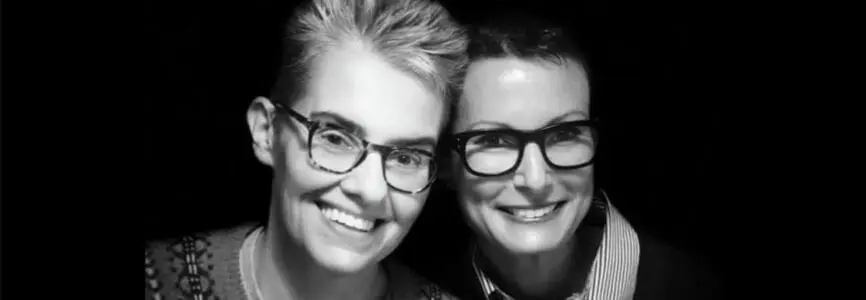Bioethics Forum Essay
Live-Tweeting About Dying: Last Lessons from Kathy Brandt
Kathy Brandt, a leader in the hospice and palliative care movement in the United States, died on August 4. She was 53 and had been diagnosed with ovarian clear cell carcinoma (OCCC), a rare, highly aggressive form of ovarian cancer, in January.
Brandt was an expert advisor to The Hastings Center project that produced the revised and expanded second edition of The Hastings Center Guidelines for Decisions on Life-Sustaining Treatment and Care Near the End of Life. As director of that project, I met and conferred with Brandt, then a senior vice president at the National Hospice and Palliative Care Organization. She was a generous colleague who graciously shared her deep knowledge of hospice practice and policy. She recently completed the fourth edition of the Clinical Practice Guidelines for Palliative Care, a crucial resource for the field.
As a final contribution to the field, Brandt (above, left) and her wife, Kim Acquaviva (above, right), a professor of nursing at University of Virginia and an expert on hospice for LGBTQ+ patients and families, regularly posted on Twitter and Facebook about their family’s end-of-life experiences. These experiences including Brandt’s early decision to forgo oncological interventions such as chemotherapy or radiation given her poor prognosis and to focus on palliative treatment to manage symptoms. Too often, we still frame this decision as a trade-off between “quantity” and “quality,” as though opting for interventions for metastatic cancer translates into more time – or at least “fighting” for it – while forgoing these interventions means less time. As New York Times columnist Jane Brody wrote this week, reflecting empirical findings, for some cancers more interventions produce neither more time nor better time. We know these findings – yet Brandt and Acquaviva, two deeply knowledgeable experts, described oncologists who questioned Brandt’s decision and had difficulty imagining not “trying,” even given a grim prognosis.
JoNel Aleccia of Kaiser Health News reported on Brandt and Acquaviva’s narrative in May and on Brandt’s death this week. This end-of-life story included the financial consequences of terminal illness. A GoFundMe campaign was created for the couple and their 19-year-old son to alleviate their loss of income, medical bills, and funeral costs at a time when the couple was paying for college and other typical midlife expenses.
Brandt and Acquaviva also took part in a Kaiser Health News expert panel on LGBTQ+ end-of-life care; watch the video.
Nancy Berlinger is a research scholar at The Hastings Center.














Thank you for this article. I would have liked to see you specify that Kathy Brandt was diagnosed with Ovarian Clear Cell Carcinoma, the rarest and most aggressive type of ovarian cancer, and had not use the more generic terminology, “Metastatic Ovarian Cancer.” I think your target audience would have found this informative, and the fact that clear cell carcinoma is the rarest and most aggressive type of ovarian cancer clearly informed the decisions made by Kathy Brandt and her partner Kim Acquaviva. They bravely chronicled their journey to the end with a cancer that “rarely responds to chemotherapy and has a median prognosis of 13 months. I’m afraid that by not clarifying the diagnosis, your comments about their decisions to forego certain treatments could be misleading to individuals suffering from more common types of ovarian cancer that more readily respond to treatment.
Thank you for your important clarification. I have updated the post to include more precise diagnostic information. As you point out, this information provides context for this patient’s understanding of her prognosis and treatment options and for her decision.
I was grateful to Elizabeth Fukushima for providing the exact diagnosis of this cancer, “the rarest and most aggressive type of ovarian cancer.” This diagnosis provides a more precise context for Kathy Brandt’s decision, not to treat, which I found very helpful.